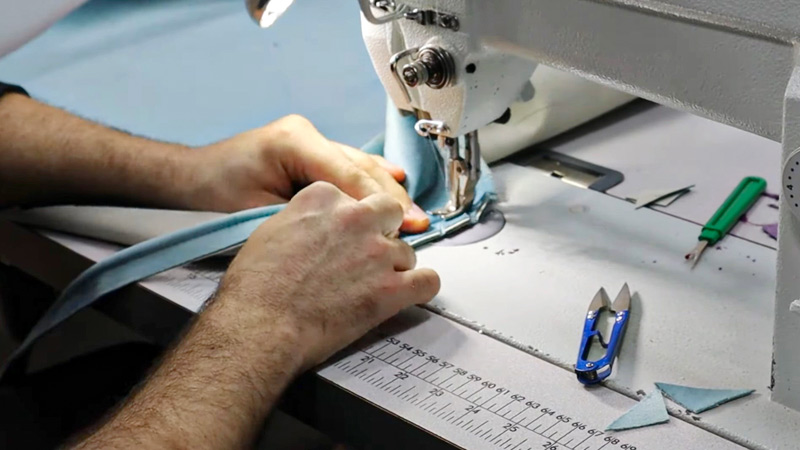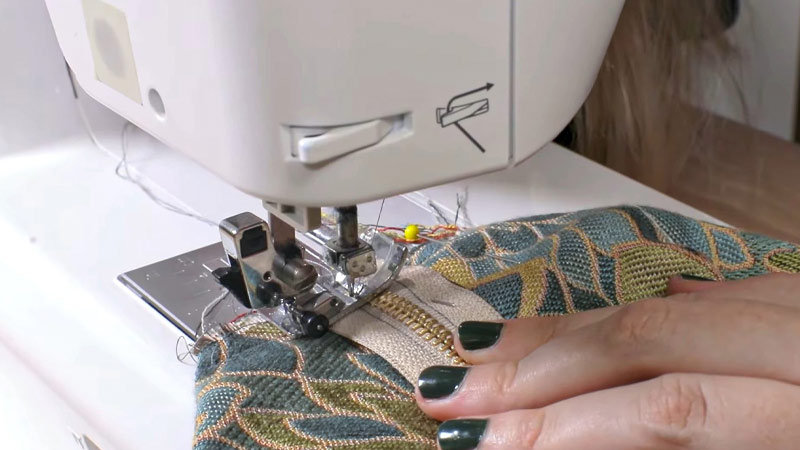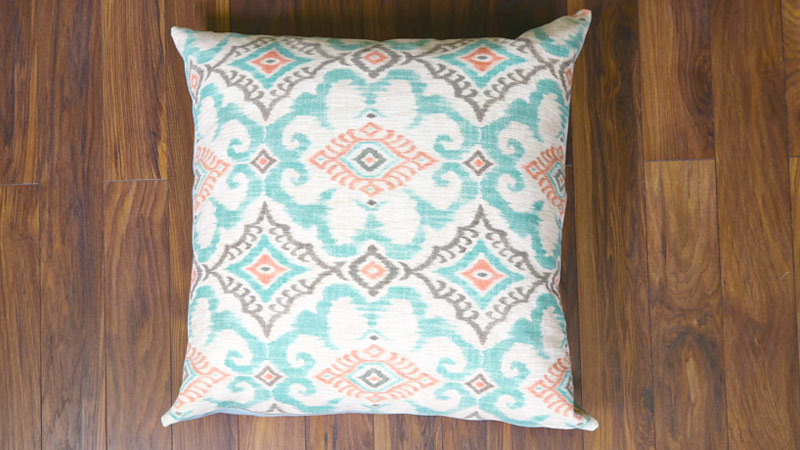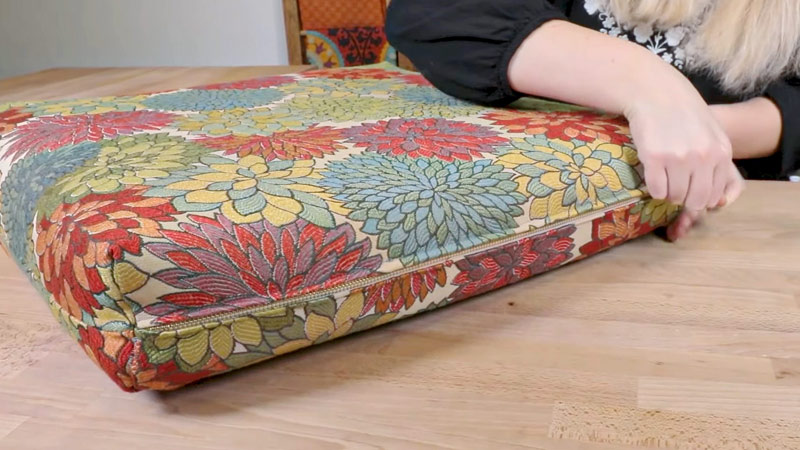Slipcover upholstery stands as a versatile and indispensable facet of sewing in the realm of home decor.
It entails crafting removable fabric covers for furniture, presenting a dual purpose of protection and adornment. These covers serve as a shield against everyday wear, spills, and stains, prolonging the life of cherished pieces.
Additionally, slipcovers offer a canvas for creativity, enabling swift transformations of a room’s aesthetic to match evolving tastes and seasonal themes.
This practical sewing technique is prized for its cost-effectiveness, offering a budget-friendly alternative to reupholstering.
In this fusion of functionality and artistry, slipcover upholstery remains a valuable asset in the arsenal of sewing enthusiasts and interior designers alike.

What Is Slipcover Upholstery Used for in Sewing?
A slipcover upholstery refers to a removable fabric covering that is designed to fit snugly over a piece of furniture, such as a sofa, chair, or ottoman.
Slipcovers are typically made from a variety of fabrics, ranging from cotton and linen to synthetic materials like polyester and spandex.
The use of slipcover upholstery in sewing has a historical legacy that can be traced back centuries, evolving from practicality to a combination of functionality and design.
Its origins are intertwined with the development of upholstered furniture and the evolving needs of homeowners.
Here are the historical legacy and origin of slipcover upholstery:
Early Origins
Slipcovers have a rich history dating back to ancient civilizations. In Egypt and Rome, rudimentary fabric covers were used to protect and adorn furniture.
These early slipcovers, though simple, laid the foundation for the more refined versions that would emerge in later centuries.
They served both utilitarian and decorative purposes, offering a glimpse into the evolving relationship between furniture and fabric.
Medieval Europe

As craftsmanship advanced during the Middle Ages in Europe, so did the complexity of upholstery. Slipcovers, fashioned from sumptuous fabrics, took on a more significant role in safeguarding delicate and costly upholstery.
This period saw the emergence of slipcovers as not only functional but also as statements of luxury and opulence, adding an air of grandeur to European homes.
Renaissance and Baroque Eras
The Renaissance and Baroque periods witnessed slipcovers attaining new levels of sophistication.
Crafted from the finest materials available, they were often adorned with intricate patterns and elaborate embroidery.
Slipcovers became a prominent symbol of affluence, gracing the extravagant interiors of the period’s elite.
19th Century and Victorian Era
The 19th century was a pivotal era for slipcovers. In the Victorian era, characterized by its love for lavish, upholstered furnishings, slipcovers became indispensable.
They not only protected these intricate designs from the elements but also allowed for seasonal changes in decor, reflecting the Victorian penchant for variety and ornamentation.
20th Century and Beyond
With the dawn of the 20th century, slipcovers transitioned into a more utilitarian role. As furniture designs became more streamlined and functional, slipcovers were primarily employed for their protective qualities.
They gained particular popularity in households with growing families and pets, providing a practical solution for maintaining furniture’s longevity in the face of daily wear and tear.
Contemporary Usage
In the modern era, slipcover upholstery has evolved into a versatile and indispensable sewing technique. Its purpose has expanded beyond mere protection, now encompassing an aesthetic dimension.
Today’s slipcovers are crafted in an array of fabrics, styles, and colors, providing homeowners with a dynamic tool to express their personal taste and adapt their decor to changing seasons and design trends.
Creative Ways to Use Slipcover Upholstery
Slipcover upholstery isn’t just limited to its traditional role of protecting and beautifying furniture.
With a touch of creativity, you can explore a variety of unique and imaginative ways to use slipcovers in your home decor and beyond.
Here are some creative ideas to inspire you:
Floor Cushions

Sew slipcovers for large floor cushions or poufs. These slipcovers can be easily removed and washed, making them perfect for casual seating in a living room, playroom, or outdoor space. Coordinate the slipcovers with your existing decor or create a fun mix-and-match look.
Table Transformation
Turn a plain and worn-out table into a stylish centerpiece by crafting a slipcover that fits snugly over its surface.
Choose a fabric that complements your room’s decor, and secure the slipcover with elastic or ties. This instantly gives your table a new look and adds a layer of protection.
Pet Bed Covers
Give your furry friends a cozy and stylish place to rest by making slipcover upholstery for their beds. Choose pet-friendly, durable fabrics, and consider adding a zipper or Velcro for easy removal and cleaning.
Outdoor Furniture Refresh
Extend the life of your outdoor furniture by creating slipcovers that protect them from the elements.
Waterproof and UV-resistant fabrics can help shield your patio furniture from rain and sun damage while adding a touch of style to your outdoor space.
Dining Chair Makeover
Revamp your dining room by sewing slipcovers for your dining chairs. This allows you to change the look of your dining area without investing in entirely new furniture.
Experiment with different fabrics and patterns to match your dining room’s theme or the changing seasons.
Headboard Covers
Create slipcovers for your headboard to transform the bedroom decor. This DIY headboard upholstery can be updated to match the bedding or seasonal themes, giving your bedroom a fresh and inviting atmosphere.
Benefits of Using Slipcover Upholstery for Furniture

Using slipcover upholstery for your furniture offers a range of advantages that cater to both practical and aesthetic needs:
Protection and Durability
Slipcovers serve as a protective shield for your furniture, guarding against spills, stains, pet hair, and the everyday wear and tear that furniture endures.
By adding this extra layer, you significantly extend the lifespan of your upholstery, ensuring it looks newer for longer.
Easy Maintenance
One of the most significant benefits of slipcovers is their ease of cleaning. They are designed to be easily removed and machine-washed.
This is particularly convenient for households with children, pets, or those that frequently host guests. It provides a hassle-free solution for keeping your furniture fresh and clean.
Versatility and Flexibility
Slipcovers provide a remarkable level of versatility. They grant you the ability to transform the appearance of your furniture without the expense and effort of reupholstering or purchasing entirely new pieces.
This adaptability allows you to switch out slipcovers to match different seasons, occasions, or evolving design preferences.
Cost-Effectiveness
Compared to the cost of reupholstering, slipcovers offer a more budget-friendly alternative.
They enable you to give your furniture a facelift without incurring the substantial expense that comes with completely redoing the upholstery.
Customization and Style
Slipcovers come in a vast array of fabrics, colors, patterns, and styles. This means you have the creative freedom to customize the appearance of your furniture to reflect your unique taste and align with the overall decor of your space.
Health and Allergen Control
For individuals with allergies or sensitivities, slipcovers can be invaluable in managing indoor allergens. They can be easily removed and laundered, helping to maintain a clean and allergen-free living environment.
Seasonal Adaptability
Slipcovers offer a practical solution for adapting to seasonal changes. Light, breathable fabrics can create a cool, airy ambiance in the summer, while warmer, cozier materials offer comfort during the colder months.
Pet-Friendly Solutions
For households with pets, slipcovers can be a real lifesaver. They provide a protective layer that can be quickly cleaned or replaced if your furry friend has an accident or leaves behind fur.
Quick Style Refresh
Changing slipcovers is a swift and uncomplicated way to update the overall look of a room.
This is especially valuable if you’re seeking to refresh your decor without making significant changes to the core furniture pieces.
Preservation of Vintage
Slipcovers offer a way to protect and preserve antique or sentimental furniture without compromising their original upholstery.
This allows you to continue enjoying the aesthetic appeal and sentimental value of these pieces for years to come.
Maintenance and Care

Maintaining and caring for slipcover upholstery is essential to ensure its longevity and continued effectiveness in protecting your furniture.
Here are some key tips for proper maintenance and care:
Regular Cleaning
Vacuuming or shaking out slipcovers is an essential first step in their maintenance. This removes surface debris, preventing it from settling into the fabric over time.
Regular cleaning helps maintain the freshness and appearance of the slipcovers.
Spot Cleaning
Swift action is crucial when it comes to spills and stains. Blotting with a clean, damp cloth or sponge is the most effective method. Avoid rubbing, as this can push the stain deeper into the fabric.
For tougher stains, using a mild detergent or specialized upholstery cleaner can be effective. Always follow the care instructions provided by the manufacturer.
Machine Washing
When machine washing slipcovers, it’s imperative to adhere to the manufacturer’s guidelines.
Generally, slipcovers made from washable fabrics can be safely laundered in a washing machine.
Use a gentle cycle with cold water. Avoid using bleach or strong chemicals, as they can weaken the fabric over time.
Drying
After washing, it’s important to allow slipcovers to dry properly. Air drying is recommended, but if machine drying is an option, use low heat settings. Avoid high heat, as it can cause the fabric to shrink or lose its shape.
Ironing and Steaming
To remove wrinkles or creases, ironing or steaming the slipcovers may be necessary.
Use a low heat setting, and always place a cloth or thin towel between the iron and the fabric to prevent direct contact. This ensures that the fabric isn’t damaged during the process.
Fabric Selection
Choosing the right fabric for slipcovers can impact their durability and ease of care. Synthetic blends like polyester and microfiber are known for their durability and stain-resistant properties.
Natural fibers like cotton and linen can be comfortable and breathable, but may require more frequent cleaning.
Protecting Against Pets
If you have pets, additional protective measures can be taken.
Consider using furniture covers or throws in conjunction with slipcovers. This adds an extra layer of defense against pet hair, scratches, and accidents.
Avoiding Harsh Chemical
Harsh chemicals like bleach and strong solvents can be damaging to fabric.
It’s recommended to use mild, fabric-friendly cleaning solutions to maintain the integrity of the slipcovers.
Professional Cleaning
In cases of heavily soiled slipcovers or those made from delicate materials, consulting a professional upholstery cleaner is advisable.
They possess the expertise and specialized equipment to handle more challenging cleaning tasks effectively.
Storage
Slipcovers need to be stored when not in use, ensure they are thoroughly cleaned and completely dry.
Storing them in a cool, dry place, away from direct sunlight, helps prevent mold or mildew from forming.
FAQs
What is slipcover upholstery?
Slipcover upholstery is a sewing technique that involves creating removable fabric covers for furniture. These covers serve to protect and enhance the appearance of furniture pieces.
What are the benefits of using slipcover upholstery?
Slipcovers offer protection against stains, spills, and wear, making them a practical choice for preserving furniture. They also allow for easy customization and style changes.
Can slipcovers be machine-washed?
Yes, many slipcovers can be safely machine-washed. However, it’s important to follow the care instructions provided by the manufacturer to ensure proper cleaning.
How do slipcovers differ from reupholstering?
Slipcovers are removable fabric covers that can be easily changed or cleaned, providing a cost-effective way to update furniture. Reupholstering involves completely replacing the fabric and padding of a piece of furniture.
What types of fabric are suitable for slipcover upholstery?
Durable and washable fabrics like cotton, linen, polyester, and microfiber are commonly used for slipcovers. The choice of fabric depends on factors such as style preference and intended use.
Wrap Up
Slipcover upholstery, a versatile sewing technique, serves multifaceted purposes in home decor. Its primary function lies in providing removable fabric covers for furniture, safeguarding against stains, wear, and tear.
Beyond protection, slipcovers offer a canvas for creativity, allowing swift transformations of a room’s aesthetic.
They facilitate easy maintenance, enabling quick cleaning or seasonal adjustments. Cost-effective and customizable, slipcovers breathe new life into existing furniture without the need for costly reupholstering.
With slipcover upholstery, cherished pieces can be preserved while aligning seamlessly with evolving styles and practical needs, making it a valuable asset in the realm of sewing and interior design.
Leave a Reply